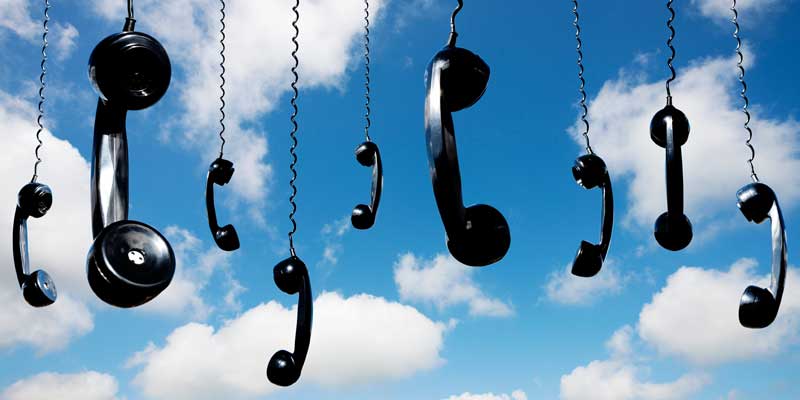Thursday, 26 April 2018
Wednesday, 25 April 2018
Finding Freedom: How Quitting Caffeine Transformed My Life
Finding Freedom: How Quitting Caffeine Transformed My Life

“Freedom is that faculty which enlarges the usefulness of all other faculties.” – Immanuel Kant
As a yogi and meditation teacher, I consider myself to be relatively aware of my body’s signals and the ramblings of my mind. But if you follow a similar path, you know that there are always hidden recesses of the self that remain to be uncovered. It took me a long time to be willing to take an honest look at my dependence on caffeine.
One afternoon as I was working in my office, I suddenly realized how often I was looking at my watch. I was awaiting, not a call from a loved one or an evening out with friends, but my next cup of coffee. As the sun spread its warm rays through my office window, the full force of the thought struck me: “Is this what my life has become? The high point of my afternoon is a caffeine fix?”
This moment sparked a journey to kick my coffee habit. It took me a few days to move beyond the intense headaches and mental fog of peak caffeine withdrawal, and two weeks for my body to completely realign with its natural cycles. Once I arrived on the other side of that struggle, I began to notice profound shifts in my life as a result of being caffeine free, some that I fully anticipated and hoped for, and a few that far exceeded my expectations.
I sleep better.
I always believed that caffeine no longer affected my sleep, and even boasted that I could consume coffee late at night and go to bed at the usual time, but once I quit it became clear that these were the delusions of an addict. As I moved beyond the agony of withdrawal, I began to experience the deepest sleep I had had for a very long time. It turned out that even though I was able to fall asleep immediately after downing a cup of coffee, the quality of my sleep was being compromised. Caffeine free, I remained asleep for more of the night and awoke in the morning feeling well rested. I also practically eliminated the urge for an afternoon siesta.
I am tuned into the needs of my body.
Until I stopped drinking coffee, I had no idea how often I was pushing through the needs of my body without paying them any attention. Instead of resting when I was tired, I headed out to the local coffee shop for a double shot. Instead of drinking water when I was thirsty, I was subjecting myself to the diuretic effects of caffeine along with my fluid intake. When I should have been eating because my body needed energy, coffee was instead suppressing my appetite, and every time my body longed for movement and fresh air, I responded with more coffee.
Without the crutch of caffeine, I was forced to pay more attention to what my body needed – and, it turned out, that sleep, exercise, food, water, and meditation satisfied most of the needs that coffee was merely glossing over. And as a bonus, when I truly listen to what my body needs, I stay satisfied for longer and feel healthier and happier.
I experience less stress, and cope with it better.
Now that I no longer drink coffee, I find I am much more relaxed at work. When challenges arise, as they inevitably do, I am able to remain calm and address them without succumbing to the stress. I feel less rushed and overwhelmed as I go through my day, and am able to maintain my focus more consistently and for longer periods of time. Meditation and yoga continue to be the cornerstone of my strategy for dealing with difficult situations, but I now find them to be more effective than they were during my coffee drinking days.
I incorporate healthier ways of maintaining my focus and energy levels.
For many years, instead of being powered by the energy of the rising sun and excitement for the day ahead, I relied on a pot of coffee to launch me into my morning and to propel me through the many energy dips I experienced every day. Since kicking my coffee habit, not only is my energy more stable, but I utilize much healthier strategies when I require a bit of a boost. I start my day with meditation and a brisk walk and go to the gym regularly after work. I’ve also rebooted my yoga practice, and find that breathing exercises and a few yoga poses can be really helpful if I’m feeling sleepy or unfocused during my day.
I am more present and feel more alive.
I was shocked to discover that caffeine was creating a barrier between myself and the ability to be present in the moment. However, once I was no longer drinking it, I noticed that my meditations improved. You may say it is my imagination, but I also felt that my vision and sense of hearing were sharper. It is as though I have regained the ability to fully experience life as it is, rather than through the lens of my addiction. As I have slowed down and begun to truly pay attention to how I’m feeling, I have received an unexpected gift: the full, unadulterated freedom of being alive.
Tuesday, 24 April 2018
How Feeling My Pain Released Me From It
How Feeling My Pain Released Me From It

“You can’t avoid pain but you can choose to overcome it.” – Paulo Coelho
Pain.
We all have it.
It is the residual aching from loss, failure, and betrayal. It is having to live with the mistakes you’ve made, the decisions made by others and the fallout from them.
The pain reminds us that what happened was real and drives us to never let it happen again.
Much our lives are devoted to avoiding pain. Our brains have set up all sorts of defenses against pain and we say phrases like “I’ll never do that again” to gain some sort of control over it.
But despite the good intentions and protections we’ve put in place, pain is inevitable.
Pain is my constant companion. We’ve been hanging out for many years now. At certain times in my life, Pain has been a long distance friend— he’ll write, call, leave voicemails and text messages every once in awhile but for the most part, Pain and I didn’t connect all that much. But in other seasons, Pain decided to move in with me. He followed me to work, to school, to gatherings with my friends and family. Pain sat in my car, laid in my bed, got a membership to my yoga studio and joined my gym.
Pain was everywhere.
I learned to make peace with pain being part of my lifelong journey, but I’ve also decided that pain isn’t going to be the theme of my life. I want to have a plan for my pain.
I know that some traumatic events in life will never leave me and that I’ll think or talk about them for years to come. But rather than feeling the same gut-wrenching, panic-filled rage and shame with each recollection, I want to be able thing reflect on my life knowing how painful times were without reliving that feeling each time it comes to mind.
I think about it like breaking a bone. When you break something that was meant to whole, it can be ridiculously painful. There are moments of agonizing, consuming hurt. The healing process is lengthy and hard. But when you heal and tell the story of how you broke that bone and how you recovered, you don’t actually physically feel that pain anymore.
You don’t feel that pain anymore because you recognized that something was wrong, felt the pain, decided you didn’t want the pain to stay and went through the process of healing.
When it comes to our emotional pain, some of us never go through these stages and we’re left feeling the pain from a wound possibly many years old.
I thought I was doing well in my journey to be released from pain. I was in therapy. I was reading the right books. I was listening to lectures, podcasts, sermons, and meditative mantras. I was talking about my pain to my friends and family. And yet, I was getting nowhere. I still had PTSD episodes, and the night terrors wouldn’t cease. I still felt like a shell of a person. I was hanging out with Pain each and every day.
I was trying so hard to get rid of the pain by actions that I didn’t allow myself to sit in it.
I thought that if I sat in the pain I wouldn’t survive it. I thought there was no way to mourn and make it out alive. I thought that if I allowed myself to really feel and embrace it, I would be stuck in the pain forever.
That, however, isn’t how it works.
Inviting the pain in is what saved me.
Letting the pain in is giving yourself permission to fall apart, but it ISN’T saying that you want to stay that way. It is feeling the full weight of it all, all the anguish and heartache, and acknowledging how awful it was.
The point of feeling your feelings is to create room for healing to happen. This space is created from emotional release.
Instead of striving to get better, push the pain down, or attempt to numb it, I faced it.
And it was really, really messy.
Suddenly I’m the girl that cries all the time.
I listen to a certain song- I cry.
I shop at a certain store- I cry.
And suddenly I’m the girl with anger.
I drive past a certain neighborhood- I start hitting my steering wheel over and over.
I listen to a triggering voicemail- I throw my soccer ball against the concrete wall.
I gave myself permission to express what was happening inside of me, no matter what it looked like.
It is me actively deciding not to hide from what is real to me.
And it left me with room in my brain to unpack how to become mended.
Feeling your feelings ISN’T the same as trying to torture yourself with your shortcomings or trauma. It is simply taking hold of a feeling when it comes, bringing awareness to it, and being kind to yourself about experiencing that emotion.
Pain isn’t pretty and it doesn’t require a pretty process. The important part is that you’re doing it. Living a healthy life on the inside is a great image but it is absolutely terrifying to do the work to get there. But it is one of the bravest, most rewarding practices you can do.
Through owning my pain and then going through the practical steps of healing (for me, I love therapy and intentional self-care), the broken bones of my soul don’t feel so painful.
I feel released.
A STORY THAT WILL CHANGE YOUR LIFE - One of The Best Speeches Ever by Li...
just go to show what you can achieve, how would you have managed this?
Sunday, 22 April 2018
8 Communication Barriers in Business
8 Communication Barriers in Business

Companies must develop a working environment that is conducive to open, trusting, caring relationships between people—an environment that welcomes new ideas and encourages constructive feedback; one in which management actively serves as a catalyst for nurturing and then disseminating new ideas. One of the functions of management is to recognize communication barriers so that the organization can avoid them. Discussed below are some of the most significant communication barriers to avoid.
Communication barrier: Rigid adherence to organizational charts. Organization charts in a company neither define relationships as they actually exist nor direct the lines of communication. If the organization doesn’t reside in the minds and hearts of the people, it doesn’t exist. No chart can fix that. An organization’s function is simple: to provide a framework, a format, a context in which people can effectively use resources to accomplish their goals. The problem is that organizational charts imply that communication should only flow vertically. The fact is communication must flow across organizational and functional units as well.
Communication barrier: Management isolation. Management should keep in mind that creating lavish executive offices, having administrative assistants construct what amounts to barbed-wire enclosures around those executive offices, establishing perquisites—the corner office, executive parking spaces, separate executive floors, private washrooms and dining rooms, limos, even flying first class when others sit in coach—loudly proclaim who is boss. These “perks” increase personal distance and ensure that people feel that their leaders are unapproachable.
Communication barrier: The development of caste systems. The caste system creates artificial barriers that inhibit communication. For example, does your organization encourage clear language or is jargon the norm? Are there opportunities for people at different levels and in different functional groups to spend time with one another, or is there socializing only along status lines?
Communication barrier: The existence of physical barriers. Distance poses another kind of problem in the workplace. People communicate most with those physically closest to them. Thomas Allen of MIT notes that “beyond a distance of 25 or 30 yards, personal interaction drops off markedly. That is why it is important for management to try to bring together as much as possible those who work together.”
Communication barrier: The ambiance surrounding meetings. The process of setting up a meeting and the nonverbal cues during a meeting often communicate as much as the content of the meeting itself. For example, how often are meetings held? Are people early or late for meetings? Is the boss late? What’s the layout of the room? Who gets invited? What’s on the agenda? How is the agenda prepared? How long does the average meeting last? How much time is allotted to each subject? Is the tone of the meeting formal or informal? How much dialogue is there?
Communication barrier: Consistency of words and actions. Are the actions of your organization consistent with its policies? Does management say they care about innovation, but promote those who don’t rock the boat? Do they say that they reward excellence, but give across-the-board raises? Do they say they reward creativity, but have a long-drawn-out approval process that frustrates anyone with a new idea?
Communication barrier: Political warfare. Some people hoard information for personal gain. They believe they increase their power when others are in the dark. Organizations must combat the idea that playing politics with information will bring personal gain. Organizations marked by politics, turf battles, and staff infighting lack adequate communication.
Communication barrier: Poor listening habits. When report cards are given out for how well we listen, very few of us would receive passing grades. Barriers to listening include assuming a subject is uninteresting and tuning out, focusing on the delivery rather than the content, reacting too quickly before the message is completed, picking up on emotional words and not hearing the rest of the message, listening only for facts rather than trying to absorb ideas, allowing yourself to be distracted, and avoiding listening to subjects that you don’t understand. Everyone must learn to overcome these barriers.
The bottom line is that there are four elements required to make communication thrive. First, every organization requires accessible, affordable, easy-to-use technology. Second, an open, honest work environment should be embraced. Third, people should be encouraged to break down the communication barriers that exist. Last, great leaders must communicate the guiding principles, beliefs, and values of the organization—this will rally everyone to a common cause. For just as the stars were used to navigate ships in the night, these guiding principles dictate what is important, how decisions are made, how people are rewarded, who gets promoted, what kind of person joins the organization, and how people communicate with one another.
Subscribe to:
Posts (Atom)
